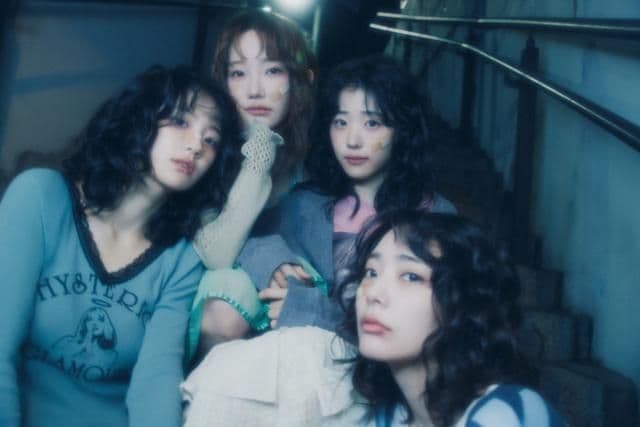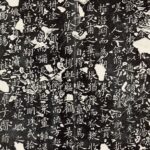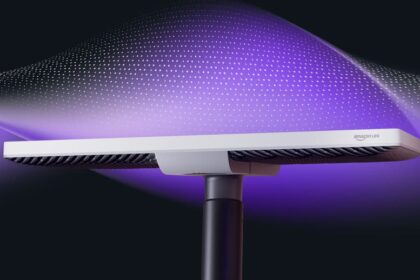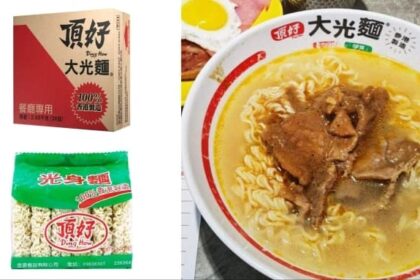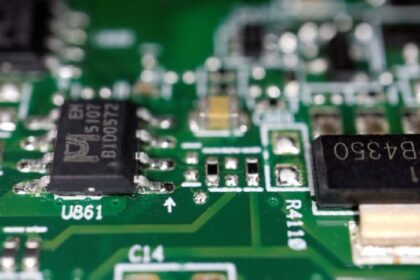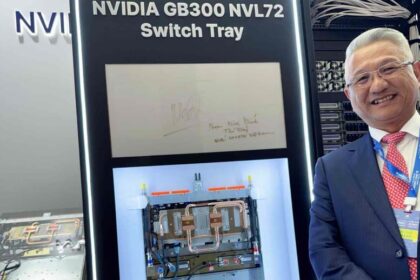Why the design matters
In K-pop, the official light stick is a powerful symbol. It is a handheld beacon fans raise in unison at concerts, a keepsake that signals loyalty, and, more and more, a creative asset that helps define an artist’s identity. Modern versions connect to venue systems and change color or pulse in sync with music. They turn a sea of individuals into a coordinated crowd, which is why their look and feel carry so much weight for fans.
Light sticks are also cultural shorthand. A crown shape signals BigBang. A hammer shape calls to mind BLACKPINK. The silhouettes and accents are designed to be distinctive at a glance, especially under stage lights or across social media. When overlap appears, fans can read it as encroachment on a group’s identity, even if the products function the same way.
The current dispute centers on a megaphone motif. The concept makes intuitive sense in pop culture, since an idol’s message and a fandom’s voice are common themes. The megaphone shape is simple enough to recognize in a venue, and it offers a large face for a logo. For many fans, that face and the overall outline are what make a design feel unique, not just the color or the handle.
How a megaphone became a lightning rod
The spark came when QWER unveiled its first official light stick ahead of the band’s debut world tour. The device is a white megaphone with a circular front that carries the group’s logo. The Boyz, a senior act in the scene, has used a megaphone light stick since 2021, with a heart shaped speaker face and a black handle. The overall silhouette and concept looked close enough that fans of The Boyz immediately protested and asked QWER to change course.
QWER’s supporters countered that a megaphone is a universal image and that no group can claim ownership of a broad concept. They argued that the face and details differ and that QWER did nothing wrong. The Boyz’s agency issued a formal statement acknowledging fan discomfort and said it had asked QWER’s management to modify the design. It also said a legal response was under review. QWER’s agencies, 3Y Corporation and Prismfilter, responded that the product had undergone review by lawyers and patent attorneys and that they found no copyright or design infringement issues. They expressed regret that the matter was being framed as a legal fight.
As the online debate intensified, QWER announced it would pursue legal action against malicious posts targeting the group. Member Siyeon voiced frustration about the criticism, which drew more attention. Mediation was offered by the Korea Entertainment Producers Association (KEPA), which warned that a narrow focus on legality could harm trust and creativity in the broader market. Despite the controversy, QWER proceeded with sales at its Rockation world tour dates from Oct. 3 to Oct. 5.
What each side is saying
The clash is not only about form and function. It is also about feelings and the value that fans attach to what they see as their group’s emblem. Both sides moved from fan arguments to official statements that tried to balance legal claims with fandom sentiment.
The Boyz agency view
The Boyz’s management framed the issue as a matter of respect for an established identity and said it had sought changes through discussion. It apologized to fans for the distress and signaled a tougher stance to avoid repeat disputes.
In a formal statement, the agency said it understood how upsetting the similarities felt to its fandom and that it had asked for design modifications that did not lead to a resolution. It added that stronger measures were on the table to protect the group’s creative assets.
The light stick is a valuable symbol that connects an artist and their fandom, and we fully understand the discomfort felt by fans. We have requested changes after raising the issue, but no final conclusion was reached. We will take strong action, including legal procedures, to prevent a recurrence.
QWER management reply
QWER’s agencies rejected the idea that they had copied or infringed on protected design rights. They emphasized that the product had been developed independently and reviewed by legal and intellectual property specialists. They also suggested that the public legal posture by the other side was premature while talks were still ongoing.
We consulted lawyers and intellectual property experts multiple times and confirmed there is no problem, including copyright infringement. We regret that, while we had been in amicable discussions, an announcement of legal action was made.
QWER’s side said it would keep listening to a range of fan perspectives and try to present a better image to both artists and fans, while maintaining that it had adhered to legal standards.
From design spat to online harm
What began as a product debate spilled across social platforms. Posts and comments from both camps described harassment and threats. Fans of The Boyz reported misogynistic language, sexual harassment, and attempts to expose personal information. QWER supporters said they saw alarming posts that threatened severe violence against the band. Such claims are difficult to verify in full, but they contribute to a volatile atmosphere that overshadows the original design concerns.
QWER’s warning that it would take legal steps against malicious content shows how quickly fandom disputes can escalate in the age of instant sharing. Even one member’s personal frustration can amplify emotions. For fans who view a light stick as part of their community identity, conflict carries social costs that extend far beyond a single concert weekend.
The legal gray area around design rights
Two questions define the legal side. First, does the earlier product hold protectable design rights that reach beyond broad concepts like a megaphone? Second, is the newer product similar enough in its overall impression to infringe those rights? In Korea, copyright can protect original artistic expression. Product shapes are often protected under design rights that are registered, and they can also be defended as trade dress when they function as a source identifier. The Boyz’s megaphone light stick was registered as intellectual property by its manufacturer in 2022, which gives its owner a basis to argue that certain features belong to a protected design.
Penalties vary by statute and circumstances, and many disputes resolve without criminal charges. Korean law allows civil remedies such as injunctions and damages, and in severe cases criminal penalties can apply, including fines up to 100 million won and prison terms up to seven years. Whether a court sees infringement often turns on details. A common yardstick is the overall impression on an informed observer, not a side by side checklist of parts. A heart shaped face versus a circular face can be a meaningful difference. The overall silhouette, proportions, and signature accents, such as a distinctive handle or branded insert, also matter.
QWER’s legal stance hinges on two ideas. The first is that megaphones are generic shapes that no single act can monopolize. The second is that differences in the face and detailing are enough to create a distinct impression. If a judge or examiner accepts those arguments, infringement is unlikely. If the registered design scope is interpreted to cover the broader megaphone silhouette with certain recognizable features, the analysis could be more complex. This is why agencies often try to settle such disputes early, before products are mass produced and shipped globally.
What makes an item protectable
Iconic light sticks share a few traits. They have a silhouette that is unique even at a distance. They include a signature feature, such as a crown, a hammer head, or a custom beacon, that is not easily confused with a generic object. They sustain recognition after small tweaks in color or finish. When fans see the shape posted on social media or glowing across an arena, they immediately connect it to a name.
Design registration can protect that distinct visual identity. Still, registration alone is not a magic shield. A registered design built around a common object often must rely on specific elements that set it apart. A rival product that echoes the generic base but clearly differs in signature elements may pass an infringement test. A rival that mimics the signature elements closely could be at risk, even if the color or logo differs.
The unwritten rules of K-pop identity
Beyond legal filings and product scans, K-pop runs on a set of cultural norms. Since the late 1990s, fandoms have used colors, names, slogans, and cheering tools to carve out an identity. Overlaps have sparked disputes many times. Fans of first generation groups argued over balloon colors in the early 2000s. More recently, some groups faced backlash when their fan club names echoed established names. One rookie act changed its fan club name more than once after fans of other artists objected, eventually settling on a new title to avoid confusion.
Those battles rarely end in court. They tend to end in voluntary shifts, apologies, or quiet design changes. The unwritten rule is simple. An act should avoid stepping on the hard won symbols of a senior group, even if a legal path exists. Fans read gestures of respect, and agencies calculate reputational cost. A legal win does not always heal a bruised fan community.
Where ethics and commerce meet
Light sticks sit at the intersection of branding and revenue. Official merchandise anchors touring income, and the light stick is often the most visible item a fan buys. If a design feels derivative, fans can see it as a shortcut that undermines uniqueness. If an agency digs in behind legal language and ignores feelings, trust erodes. The dispute over megaphone designs shows how quickly a product decision can become a test of values inside a global fandom culture.
Can mediation fix this case
Industry groups are urging a more structured way to handle conflicts. KEPA stepped in and offered to mediate before the matter reaches a court. The association acknowledged that QWER’s team may be on firm legal ground, yet warned that framing the issue only as a legal puzzle puts creative diversity and fan cohesion at risk. It called for standards that blend legal checks with respect for community identity.
In a public statement, KEPA put it plainly.
The industry urgently needs institutional safeguards to protect intellectual property and creative originality. We support standard guidelines and preventive measures, including pre registration and review systems for official merchandise designs.
KEPA also said it aims to expand its role in mediation and to work with other organizations to reduce slander and cyberbullying tied to fandom conflicts. A practical approach could include an industry registry for light stick designs, early consultation between agencies when overlap appears, and neutral panels that can issue quick recommendations without a court battle.
Whether or not the parties settle, the case has already become a teaching moment. Agencies now see that designs which pass a strict legal check can still clash with community expectations, and that ignoring those expectations carries costs. Fans see how fast online disputes spiral into personal attacks. A clearer framework, and better channels to raise concerns early, could spare everyone the next blowup.
Highlights
- QWER unveiled a megaphone themed light stick ahead of its debut world tour, drawing comparisons to The Boyz’s megaphone light stick from 2021.
- Fans of The Boyz asked for a design change, while QWER’s supporters argued the megaphone motif is a universal symbol and not exclusive.
- The Boyz’s agency said it requested modifications and is weighing legal action; QWER’s management said legal and patent reviews found no copyright or design infringement.
- QWER proceeded with sales at its Rockation shows (Oct. 3 to Oct. 5), despite mediation offers and ongoing criticism.
- The Boyz’s light stick design was registered as intellectual property in 2022 by its manufacturer, providing a legal basis to challenge lookalikes.
- Design disputes can trigger civil remedies and, in severe cases, criminal penalties in Korea, including fines up to 100 million won and prison terms up to seven years.
- KEPA offered to mediate and called for standard guidelines, pre registration, and review systems for official merchandise designs.
- Online clashes escalated, with reports of harassment and threats from both sides; QWER warned of legal steps against malicious posts.
- The deeper conflict involves unwritten norms of respect in K-pop fandom culture, not just strict legal boundaries.


